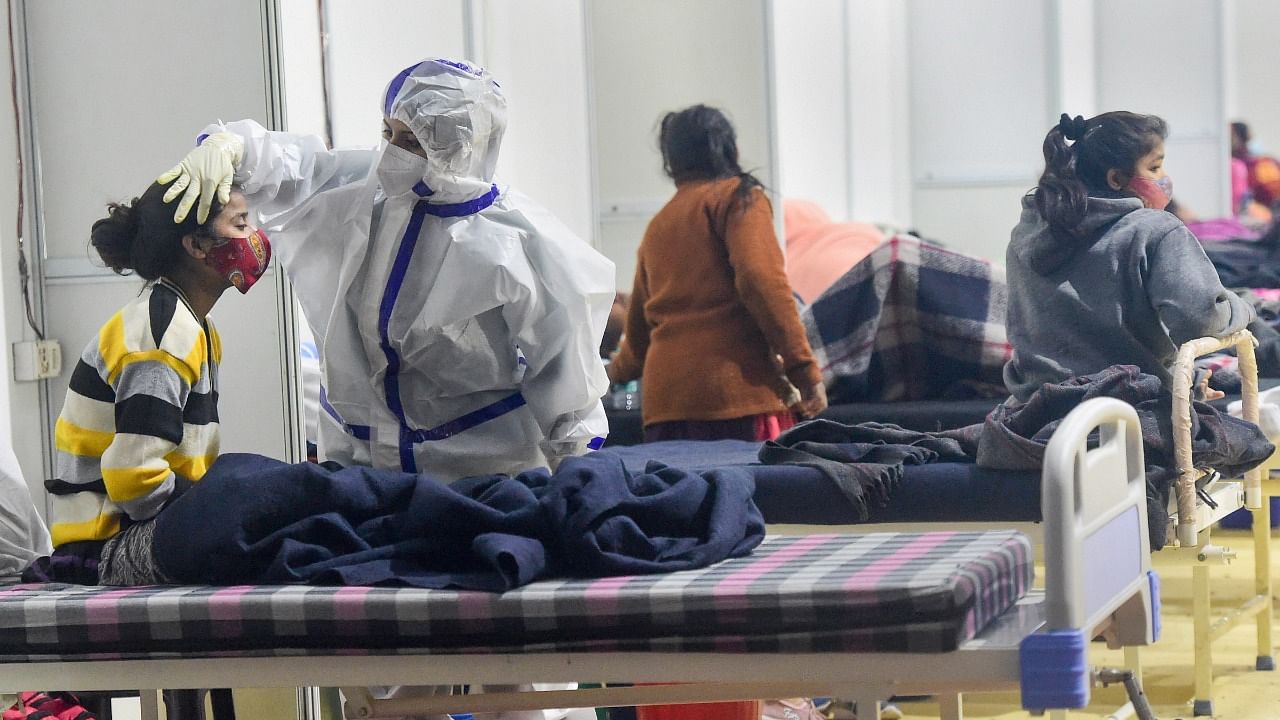
The Omicron-driven surge in cases has steered India into a third wave of the Covid-19 pandemic with the country's daily infections above the 1 lakh mark for the last few days. Experts have suggested that cases could peak between February 1-15 and ebb soon after.
While it is known that the Omicron variant of the coronavirus has mutations that make it more transmissible (by 105 per cent) than the Delta variant responsible for the distressing second wave last year, cases will continue to rise due to two factors – Reproductive number/value (R) and doubling time.
Reproduction number denotes an epidemic's ability to spread. India's R number currently stands at 2.69, which is higher than the 1.76 R value recorded at the peak of the second wave. The current R value suggests that 100 Omicron infected persons can spread the virus to 269 others. For an epidemic to shrink, the R value has to drop below one.
Also Read | Covid surge in India triggers rush for antibody cocktail, but it doesn't work against Omicron
Similarly, the doubling time — which refers to the amount of time taken for cases to double — fell from 3,684.4 days on December 27, 2021 to 454.9 days on January 6, 2022, according to a report by IndiaSpend.
The publication noted that in states like Bihar and Jharkhand that have a high R value and lower vaccination coverage, doubling time of cases has shot up massively. While Bihar's doubling time began to drop from December 21, Jharkhand's started falling on December 15.
While Delhi and Maharashtra continue to report the most Covid-19 cases across the country, other states like West Bengal, Karnataka and Tamil Nadu have seen doubling time fall drastically.
Karnataka's cases rose from 299 on December 23 to 5,031 on January 6, with the doubling time correspondingly falling from 7,528.4 days to 942.5 days. Bengal's daily cases rose from 429 on December 27 to 15,421 on January 6. The state's doubling time fell from 2,296.6 days to 141.8 days.
India on Sunday saw 1,59,632 new infections, the highest in 224 days, while the active cases increased to 5,90,611, the highest in around 197 days, according to the data updated at 8 am. The daily positivity rate rose to 10.21 per cent. From 27 states and UTs, 3,623 Omicron cases have been reported so far. The number of persons recovered is 1,409.
The Omicron variant continues rapidly as it took just eight days for India's daily cases to cross 1 lakh from 10,000 in the third wave of the pandemic. It took 47 days to reach 1 lakh cases from 10,000 in the second wave, and 103 days in the first wave.
Check out latest DH videos here: